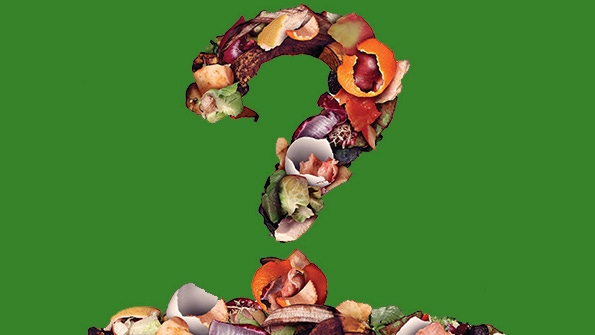Examining Best Practices in Organics Separation and Collection
Some may only want vegetative-based food waste while others may accept all food and compostable, nonfood items.

As states and municipalities get more diligent about separating organics from the rest of the waste stream, collection and processing models and fee structures are all evolving. As these changes occur, some governments and waste companies are investing heavily in education to ensure haulers, processors and generators are on the same page.
What waste processors handle varies. Some may only want vegetative-based food waste while others may accept all food and compostable, nonfood items. Haulers and generators should know processors’ specs to avoid contamination and for effective source separation, says Lorenzo Macaluso, director of client services for Center for EcoTechnology, a nonprofit facilitating business, government, and residential waste reduction services.
For example, kitchen and dining area operations require different training and protocols for handling food and food waste.
“What comes from the back of the house versus front varies,” Macaluso says. “If a facility has little tolerance for contamination I would not recommend collecting front-of-the house material. You have high potential for receiving contaminated nonfood waste materials.”
Macaluso will present at a WasteExpo presentation called Source Separation and Collection of Food Scraps and other Organics: Program Development and Best Management Practices for Generators, Haulers, and Processors as part of the Composting & Organics Recycling Conference and Food Recovery Forum at WasteExpo on Monday, May 8 at 4:30 PM in New Orleans.
More processing options are becoming available, presenting business opportunities for both processors and haulers.
“Large, centralized composting facilities, anaerobic digestion plants, and maybe smaller farm-based operations can co-exist,” Macaluso adds. The diversity “creates multiple opportunities for haulers to scale solutions and connect generators to the best processor … haulers can provide more services, whether a toter, compactor, or frontload route. We see markets where these [models] and others are thriving.”
Specialized Environmental Technologies, an organics composting company, invests heavily in education.
The company works directly with haulers’ customers to teach them how to recycle if contamination is a problem, says Anne Ludvik, the company’s director of organics development. Ludvik will also speak at WasteExpo.
Education becomes especially important with changing protocol, as seen when the company tried to take in plastic-coated papers, hoping to help
Minnesota counties reach their organics diversion goals. While the paper decomposes, the plastic was left and in such small pieces they couldn’t be screened out.
“We removed it [from the stream]. So we needed to do a new line of education so they understand the change,” says Ludvik.
Specialized Environmental Technologies also trains haulers, explaining what can and can’t go into the stream, and why they would reject a load.
One of the most effective teaching tools has been facility tours for community members—people Ludvik says want to recycle correctly but don’t always know how.
“When we bring them in and they can touch the finished compost and see the process … it reinforces their motivation,” she says.
While Minnesota’s organic diversion programs are voluntary, Ludvik anticipates this may change as more states adopt mandates.
“We feel our ongoing educational development is even more important to stay ahead of increases in contamination that could potentially follow a mandate,” she says.
California now requires large commercial food waste generators to divert organics. Various collection models have come on line there, including bags for organics that are placed in the mixed solid waste and or recycling bin, and sorted at material recovery facilities (MRFs).
Another model for cities where there is limited space for additional containers involves special routes to collect mixed waste. MRFs do a negative sort, removing non-organics, with the remaining waste taken to a digester or composter.
California jurisdictions are also introducing varied rate structures, says Laith Ezzet, senior vice president of HF&H Consultants, advising on waste management. Ezzet will also speak at WasteExpo.
In some areas organics service is less than trash service for a particular sized bin. This is to incentive customers to take organic bins to downsize their trash bins and reduce their overall fee.
Where organic fees are higher, while the cost to divert is recovered, unless people want to be good environmental citizens they are less inclined to comply, says Ezzet. “So rate structure has a huge impact on compliance. It can either be incentive or disincentive.”
Once these new models have had time to play out, California cities will measure the percentage of customers that achieve compliance with the law.
“In 2018 we will have a better feel for how these programs have done,” says Ezzet.
About the Author(s)
You May Also Like




